As a follow-up to the ????? 3133 versus Valjoux 7734 thread, I though I'd take a peek inside a Seagull 1901 chronograph, as that is what is currently being used in the PRS-5.
Technical details: The Seagull 1901 is a 23 jewel, column wheel controlled, chronograph, lever movement operating at 21,600 bph. It has a running second dial at the 9 o'clock position, a 30 minute counter sub-dial at 3 o'clock, and a sweep second counter mounted centrally along with the timekeeping minute and hour hands. The chronograph functions are controlled through two buttons, one (at 2 o'clock) for starting and stopping the chronograph, one (at 4 o'clock) for resetting the second and minute counters. The column wheel prevents the action of the reset while the chronograph is running.
The 23 jewels are in the following locations:
Balance staff - 2 bearing, 2 cap, total 4
Impulse - 1
Pallet - 2
Pallet pivot - 2
Escape wheel pivots - 2
4th wheel pivots - 2
3rd wheel pivots - 2
Center wheel pivots - 2
Top Chronograph second counter pivot - 1
Top Chronograph minute counter pivot - 1
Slider Gear pivots - 2
Intermediate minute counter wheel pivots - 2
Here is the front, with the typical Chinese front plate. This does nothing but increases the thickness of the movement and retains the hour wheel (Something the Swiss prefer to do with the dial.)
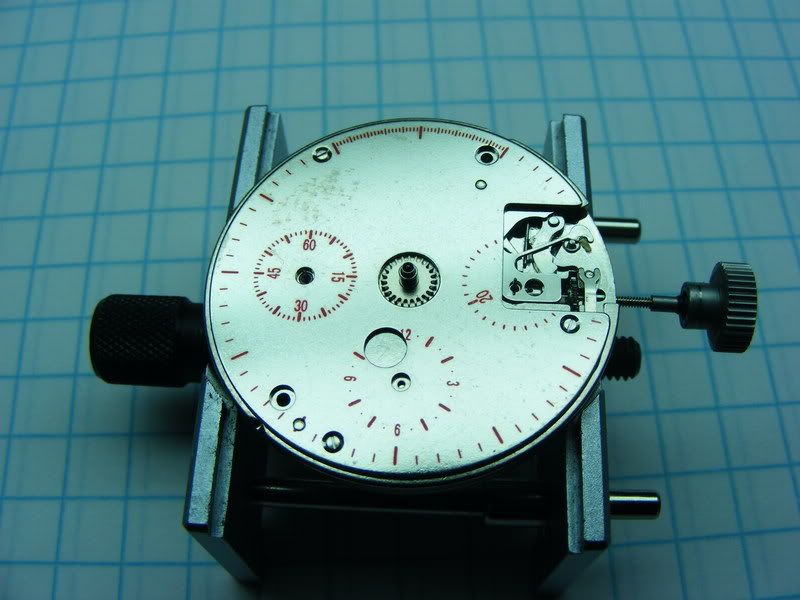
And, the back, many have probably seen a better view on the Timefactor's page.
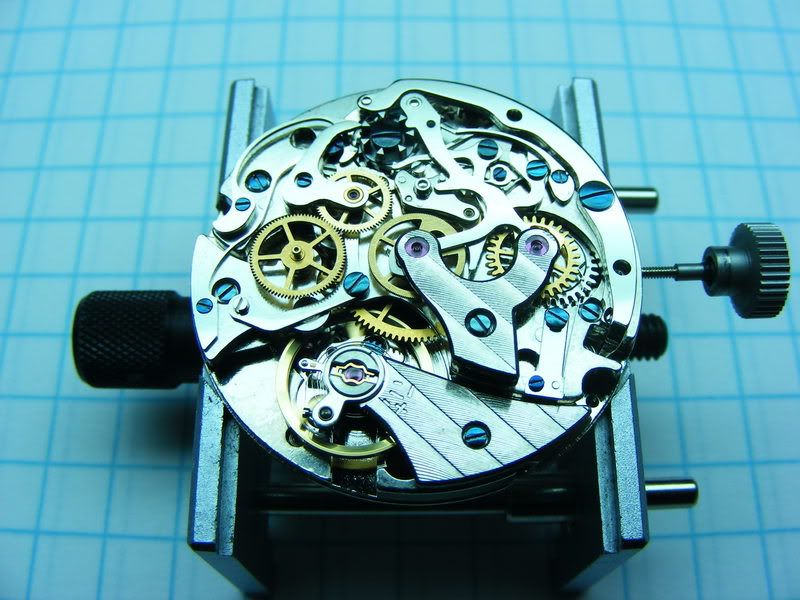
Some may not know what exactly a column wheel is, or how it works. So, here we have a close-up of the column wheel: (pardon the grease)
Chronograph engaged
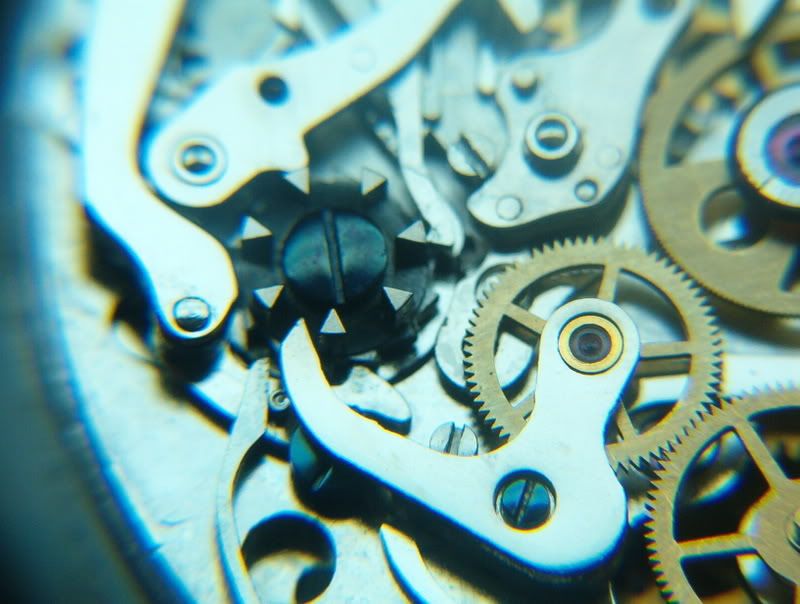
Chronograph disengaged

As you can see, the column wheel is castellated, each function is controlled by an arm that has a nose that either fits in between the castellations, or is forced out from them. This keeps you from resetting while the chronograph is running, and such, and gives the column wheel chronograph its smooth action. You may also note that the noses are rather slight, but donít worry that you will bend one, the action of the buttons does not bring direct force against these small delicate parts.
At the far left, is the start/stop lever, when the start button is pushed, the pawl moves out ward and rotates the column wheel clockwise one step. This will allow the nose of the slider gear carrier to drop in between two of the castellations and engaging the slider gear and the chrono-second wheel starting the chronograph (first figure). This will also block the hammer from falling (see the hammer nub at about 1 oíclock retaliative to the column wheel. Pushing the start button a second time (as in the second picture) will rotate the column wheel another step and the advancing castellation will force the slider gear carrier nose out disengaging the chronograph and freeing the hammer to fall. The hammer has its own sear triggered by the reset button not seen here.
Here are all the chronograph function parts. A comparison to the VAL 7734 and Poljot 3133 will reveal this has more parts (nearly 40% fewer on the cam action chronograph). From left to right: bottom row (screws not detailed): start/stop lever, start/stop spring, slider gear carrier spring, slider gear carrier and slider gear, hammer spring, hammer; second row: reset lever spring, reset lever, hammer sear, hammer sear spring, brake lever, intermediate minute wheel carrier and brake lever spring, intermediate minute wheel carrier and wheel, column wheel spring, column wheel; top row: chronograph bridge, minute counter wheel (below) chronograph second wheel.
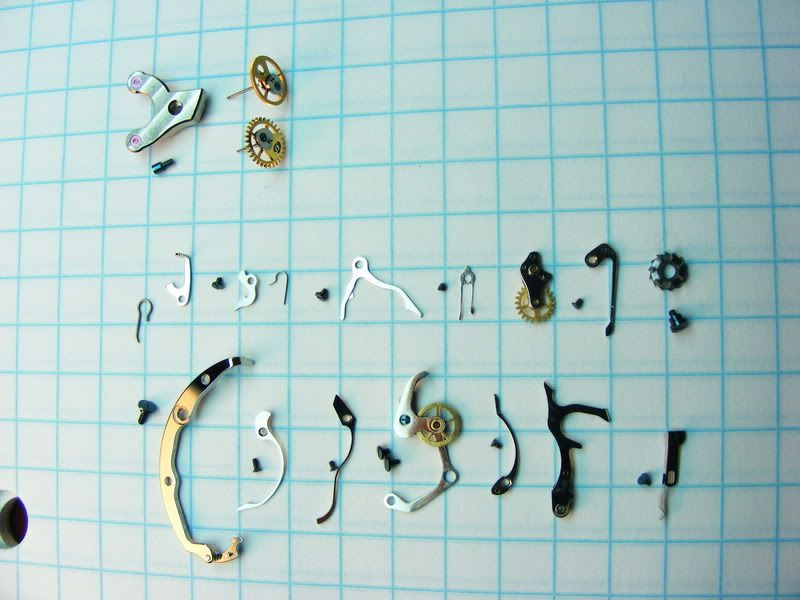
Here is just the movement minus the chronograph parts

And the gear train
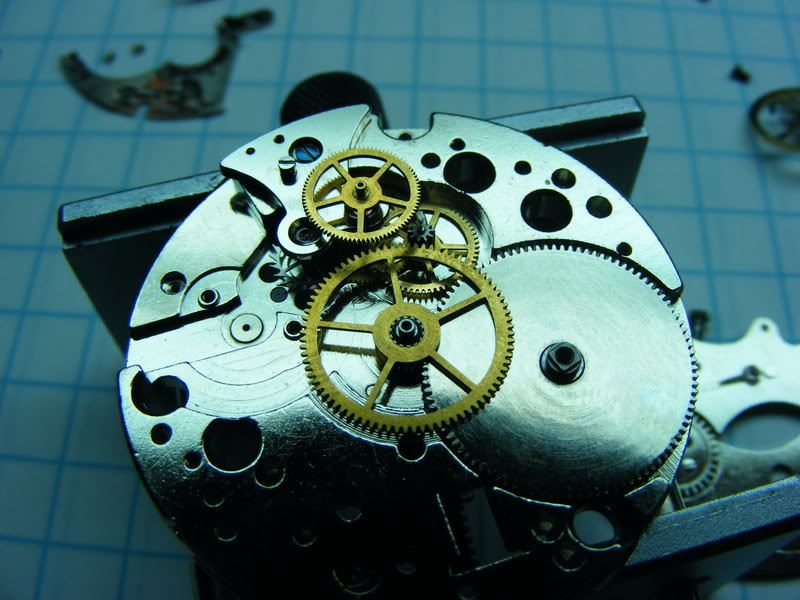
The balance with a nicely formed hairspring
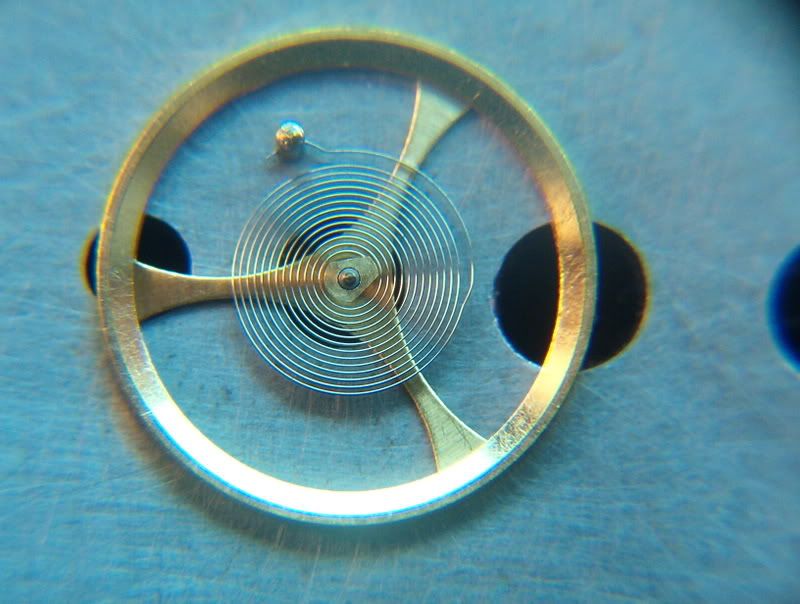
Close-up of the pallet fork
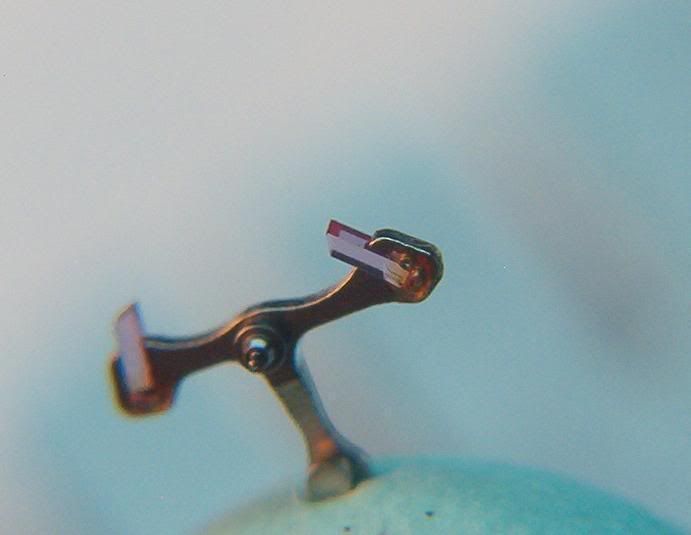
The tension spring for the second hand
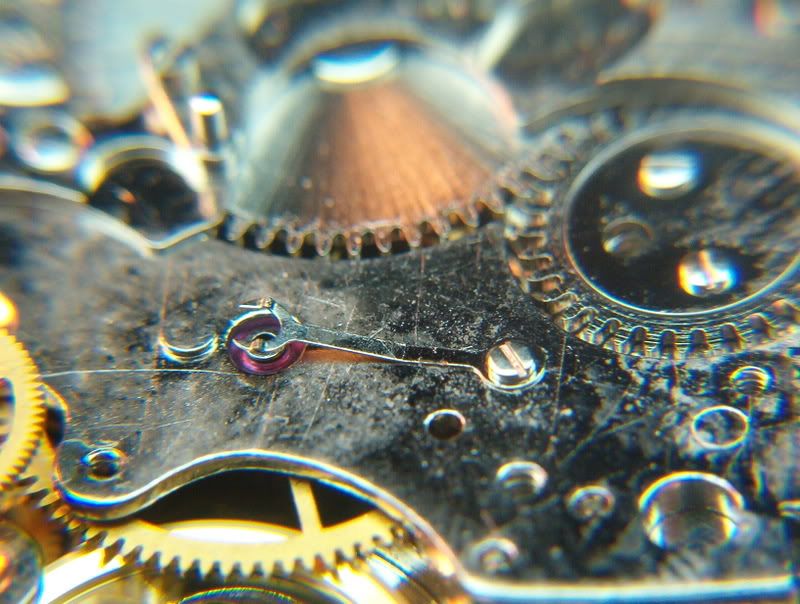
Layout of the basic time parts
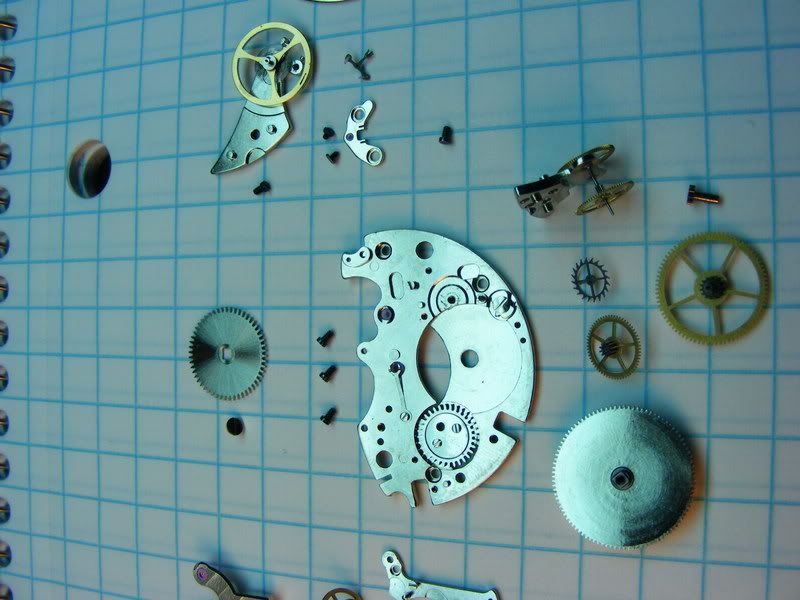
The keyless works disassembled
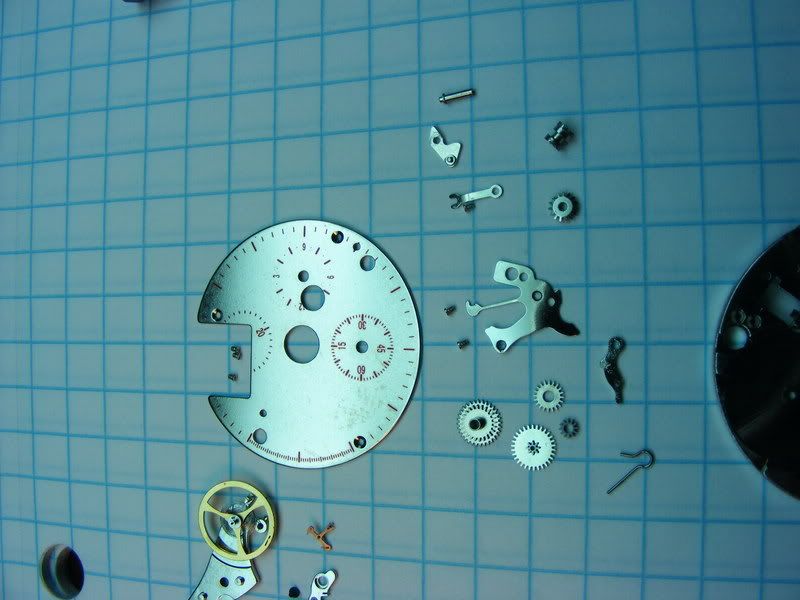
Close-up of the escape wheel
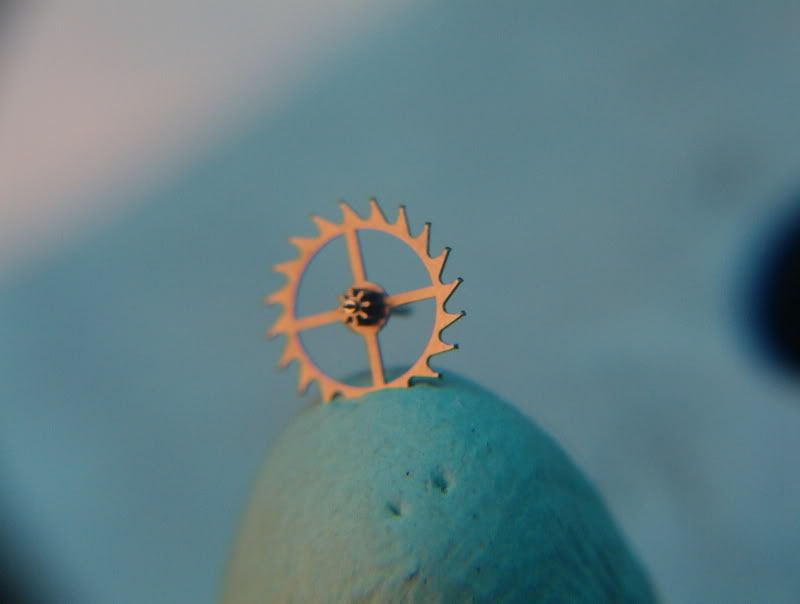
A close-up of the balance cock and anti-shock setting
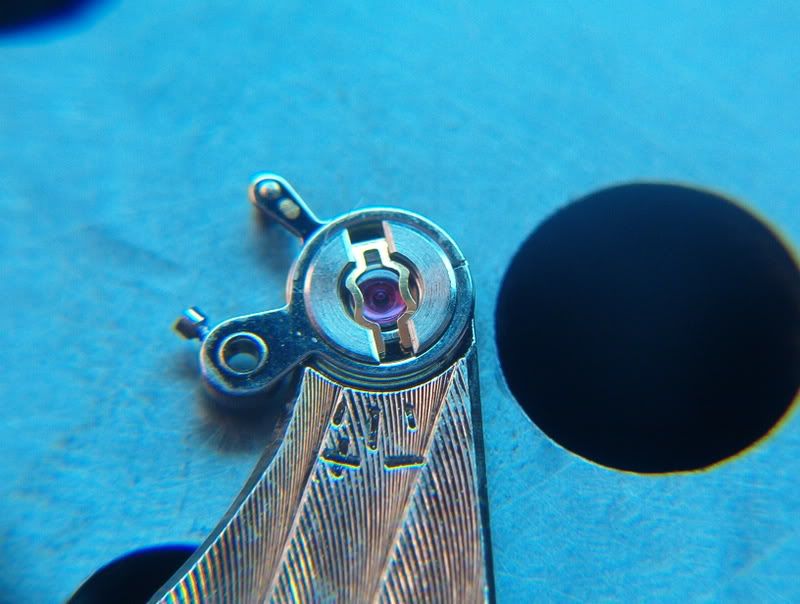
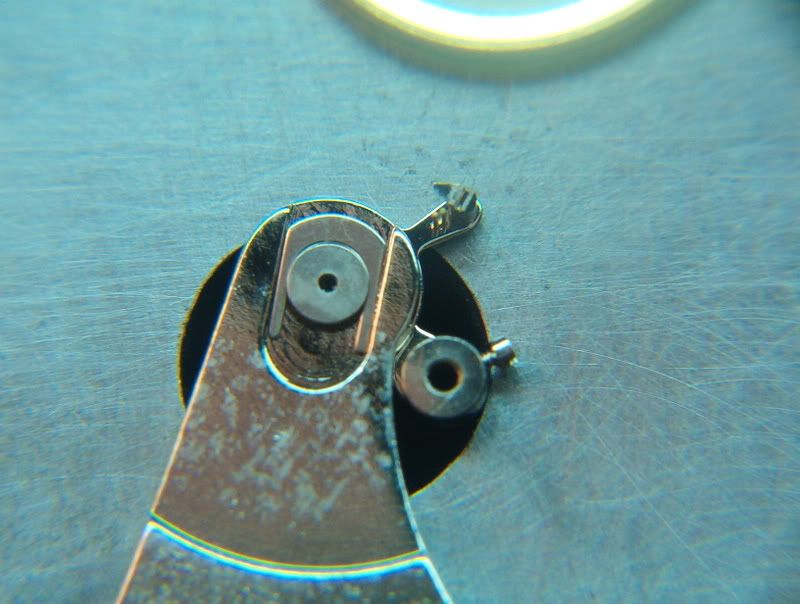
Anti-shock jewels

The movement is well made and runs extremely well, this one was time to run, on average, 7 s/d. I runs very consistent. The chronograph functions are relatively light and crisp, unlike the Poljot 3133 and Valjoux 7734.
The Swiss have, in my opinion, missed a boat by ceasing the production of handwinding two resister chronographs and focusing exclusively on automatics. Most of the chronograph market (90% or more) use the 7750 or el Premiro, the 7750 (or a variant) for the low to middle price range, the el Premiro for the higher price range.
The workmanship on these movements is better than the run-of-the-mill Chinese ST16 and DG28, The gears are slightly thicker and the teeth, especially the fine teeth of the chronograph second wheel, are clean and well formed. The adjustments of the chronograph functions (slider gear mesh on both sides, and intermediate minute wheel engagement) was adequate, but the second hand jumped slightly on engagement. Not all that bad, though.
I like this movement, I hope to see Seagull come out with a date (at six) or an actual hour counter version in the future. Then someone can do a Benrus Skychief homage. Also, it might be possible to do true "fly-back" version, this would be nice.
The finish is not the movementís strong point, this is my only gripe, and a relatively minor one. The Geneva stripes are rather coarse and uneven. These have been made with a fly-cutter, not grinding compound and a disk and the cross-feed was to high. The screws are chemically blued and almost baby blue in color, not the preferable blue-black of a good charcoal blue. There was to my surprise pearlage on the exposed portion of the mainplate around the balance, but it was so light I didnít notice it until examining the mailplate under a loupe.






































